The Four Scientific Meanings Of ‘Nothing’
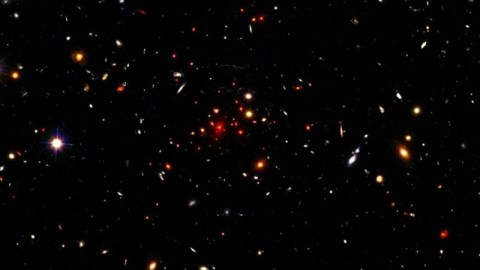
If you want to know how we get something from nothing, you’d better understand what we mean!
When we look around at our world and Universe today, we talk and think about all the things that are in it. These range from particles, atoms, and human beings to planets, stars, galaxies, and the largest structures of all. Depending on what we’re interested in, we might discuss gas, dust, radiation, black holes, or even dark matter. But all the things we see, observe, or infer the existence of today might not have been there forever. Some of these arose from some pre-existing matter that was around previously, but others seemingly came from nothing. Unsurprisingly, not everyone agrees about what we mean, scientifically, when we talk about what “nothing” actually is. Depending on who you ask (or when you ask them), you might get one of four separate meanings. Here’s why they’re all relevant.
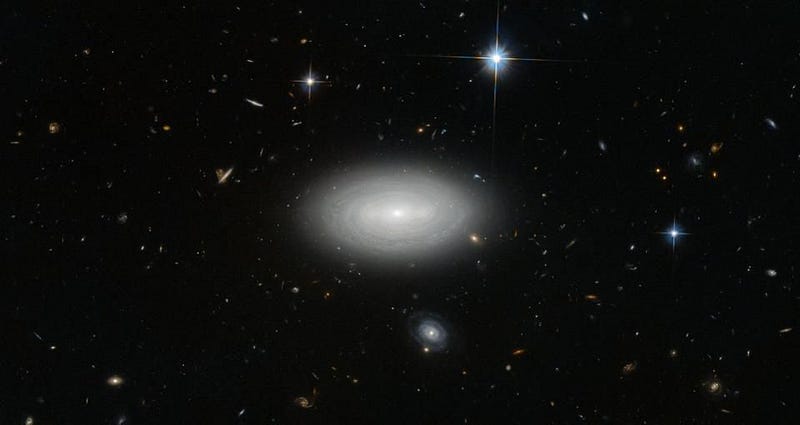
1.) A time when your “thing” of interest didn’t exist. How did the Universe make planets? How about stars? How about a matter asymmetry? These things didn’t always exist, but rather had to be created. When the mechanism is known, we normally say that our “thing” was created from something, rather than nothing. Planets came from the recycled detritus of previous generations of stars, where the heavy elements comprising their cores and solid surfaces were created and then expelled back into the interstellar medium. Stars come from contracting clouds of gas, which contain regions that get dense enough and hot enough to ignite nuclear fusion. Both planets and stars are matter that come from pre-existing forms of matter; they’re a thing that comes from something, rather than nothing.
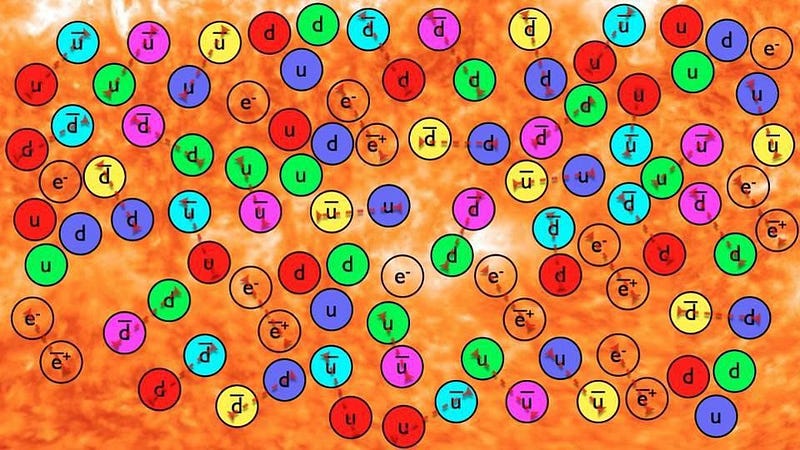
But the matter we have today didn’t come from pre-existing matter. At some point in the distant past, the Universe was composed of equal amounts of matter and antimatter; the laws of physics that we’ve discovered only enable us to create them in equal amounts. Yet the Universe we have today is overwhelmingly made of matter and not antimatter, where every one of the billions upon billions of galaxies we know of are made of matter and not antimatter. Where did our matter asymmetry come from? From a previously symmetric state; from a state where matter and antimatter existed in equal amounts. From a time when there was no asymmetry. According to some, this means that the matter we have today arose from nothing, although others who adhere strictly to one of the other definitions dispute this.
Still, no one disputes that the scientific problem of baryogenesis, or the origin of the matter-antimatter asymmetry, is one of the most pressing puzzles in theoretical physics today. Many ideas and mechanisms abound for how our matter (and not antimatter) came to exist, but we’re lacking the evidence required to declare a victor.
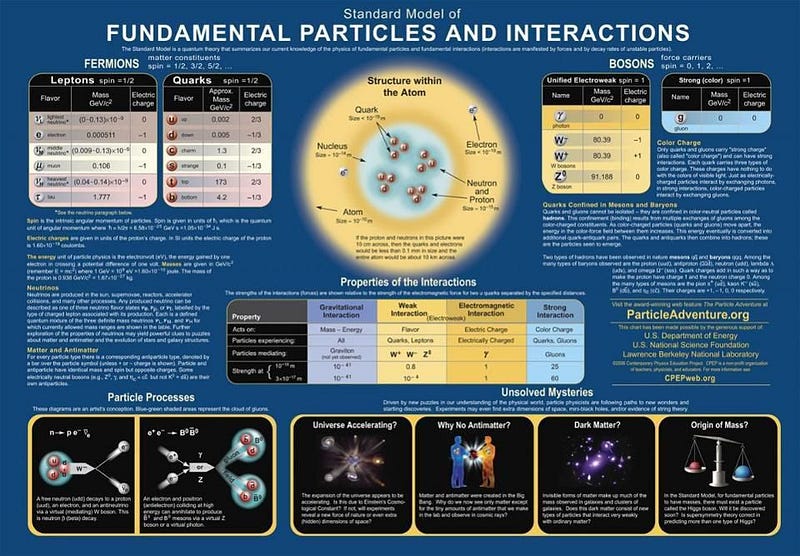
2.) Empty space. Think of all the “things” that exist in the Universe today. Think of every fundamental constituent of matter; every quantum of radiation; every black hole; every mass; every particle and antiparticle. Now, imagine removing them all. Imagine somehow taking them out of the Universe, leaving nothing but empty space behind. What would you have left? Some call that “nothing,” and are quite happy with that definition.

The entity known as spacetime is still there, as are the laws of physics. All the fields present within empty space, from the Higgs field to gravitational fields to the quantum fields that we often visualize as particle-antiparticle pairs popping in-and-out of existence are still around. Physical laws like quantum field theory are still there; General Relativity is still around; the fundamental constants are not only still there, but they have the same values they do today. And the vacuum of empty space itself still has a zero-point energy that’s non-zero. This manifests itself as dark energy today, and with a very different non-zero value in the distant past, was the driving force behind cosmological inflation. When people talk about the Universe arising from nothing, this is the type of “nothing” they’re referencing: the hot Big Bang being birthed by inflation.
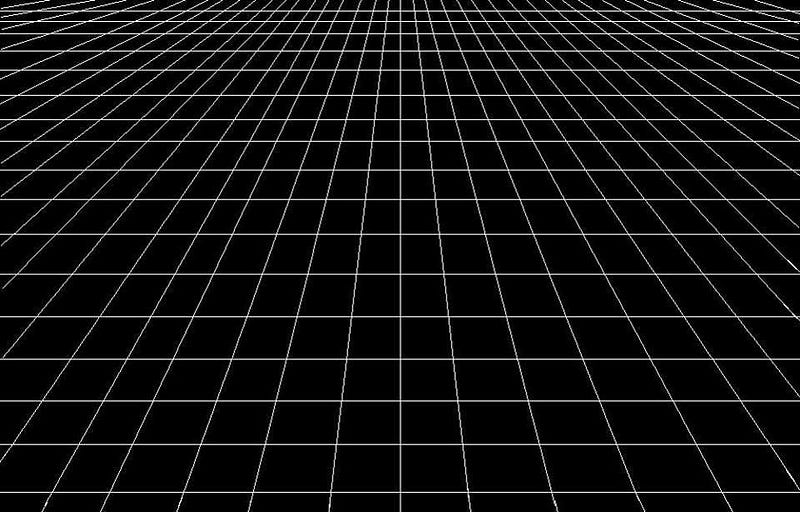
3.) Empty spacetime in the lowest-energy state possible. What if the zero-point energy of the Universe were reduced to its true ground state? When inflation came to an end, there was a huge drop in the Universe’s vacuum energy: from the inflation scale to the value it has today. That drop in the energy of empty space was responsible for the massive increase in particle energy, and the origin of the hot Big Bang. But there is no guarantee that we’re in the true lowest-energy state right now; it’s possible that we’re merely in a false vacuum state, and the true vacuum awaits us after another catastrophic, Universe-altering transition.

If you reached whatever the true ground state is and expelled all the matter, energy, radiation, and spacetime ripples from your Universe, what would you be left with? That is, perhaps, the ultimate idea of what “physical nothingness” can be: where you still have a stage for the Universe to play out on. There may be no players, no cast, no script and no scene, but in the great abyss of nothingness, you still have a stage. The cosmic vacuum would be at its minimum; there would be no hope of extracting work, energy, or real particles from this vacuum, but spacetime and the laws of physics would still be around. In theory, if you added a particle to this Universe, it wouldn’t be so different from an isolated particle existing in our Universe today.

4.) Whatever you’re left with when you take away the entire Universe and the laws governing it. At last, you can conceive of removing everything, including space, time, and the rules that govern any sort of particles or quanta of energy. This creates a type of “nothing” that physicists have no definition for. This goes beyond “nothing” as it exists in the Universe, instead realizing some sort of philosophical, absolute nothingness. But in the context of physics, we cannot make sense of this sort of nothingness. We’d have to assume that there is such a thing as a state outside of space and time, where you can have the emergence of spacetime from this hypothesized state of true nothingness.
But is that possible? How does spacetime emerge at a particular location, when there’s no such thing as space? How can you create the beginning of time if there’s no concept of something like “before” without time already existing? And where, then, would the rules governing particles and their interactions arise from? Does this final definition of “nothing” even mean anything at all, or is it just a logical construct with no physical meaning of its own?

There is no consensus here. With language having the ambiguity it does, you can say “nothing” and legitimately be referring to any of these, with purists eagerly waiting to yell at you if you dare use “nothing” in a context which is less pure than their definition. If something fundamentally arose where there was no such thing before, you can call it nothing, but not everyone will agree. If you take all the matter, antimatter, radiation, and even spatial curvature away, you can certainly lay a claim to that being what “nothing” is all about, but there are some “things” that are still around. If you then take away any energy inherent to space itself, leaving only spacetime and the laws of nature, you can call that “nothing” as well. But philosophically, some people will still be dissatisfied. Only by taking away that as well will some finally acquiesce to calling such an entity “nothing.”
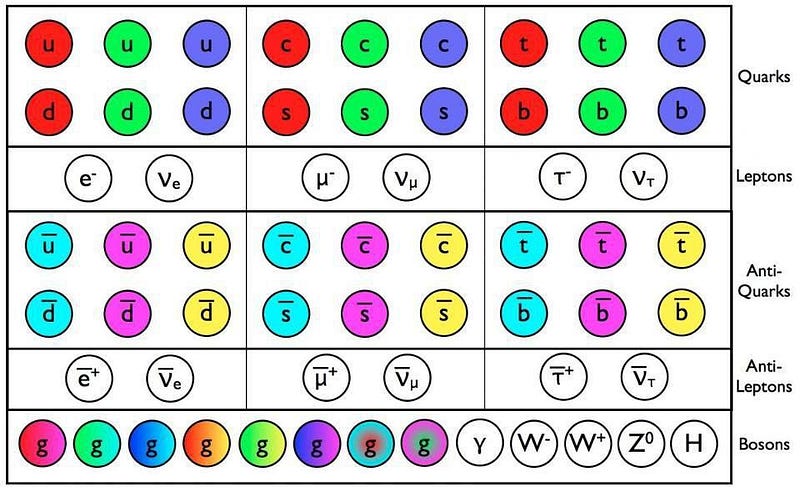
So who’s right? They all are, in their own way. The key isn’t to argue or fight over what “nothing” truly is, but to accept and understand these definitions as people use them. It’s paramount to not confuse one meaning for another, or to get into a squabble over why it’s wrong to use a word in a particular manner. Instead, when someone — particularly a scientist — says the word “nothing,” try and understand which meaning they’re using, and what the phenomenon is that they’re trying to explain. For as far as our imaginations can take us, the only true form of knowledge we can hope to have concerning anything at all relies on putting it to the test in our own physical reality. Everything else, no matter how logically sound, is merely a construct of our minds.
Ethan Siegel is the author of Beyond the Galaxy and Treknology. You can pre-order his third book, currently in development: the Encyclopaedia Cosmologica.





